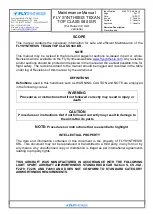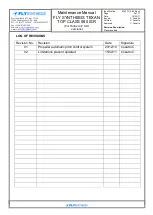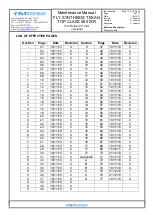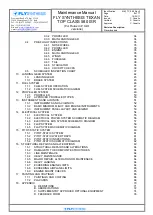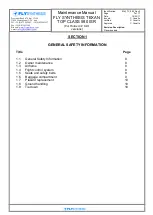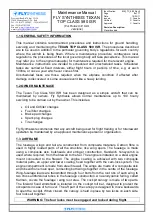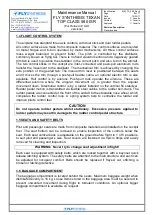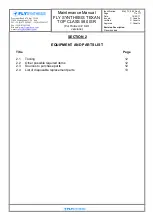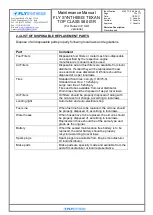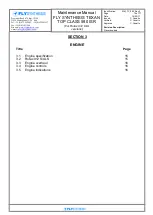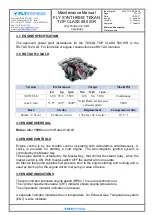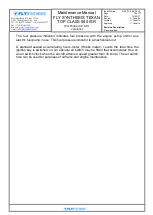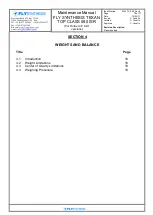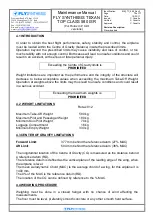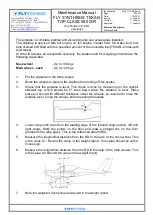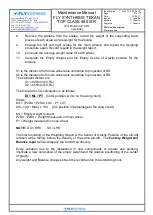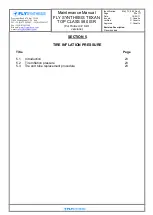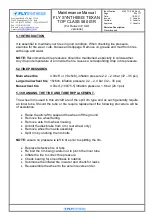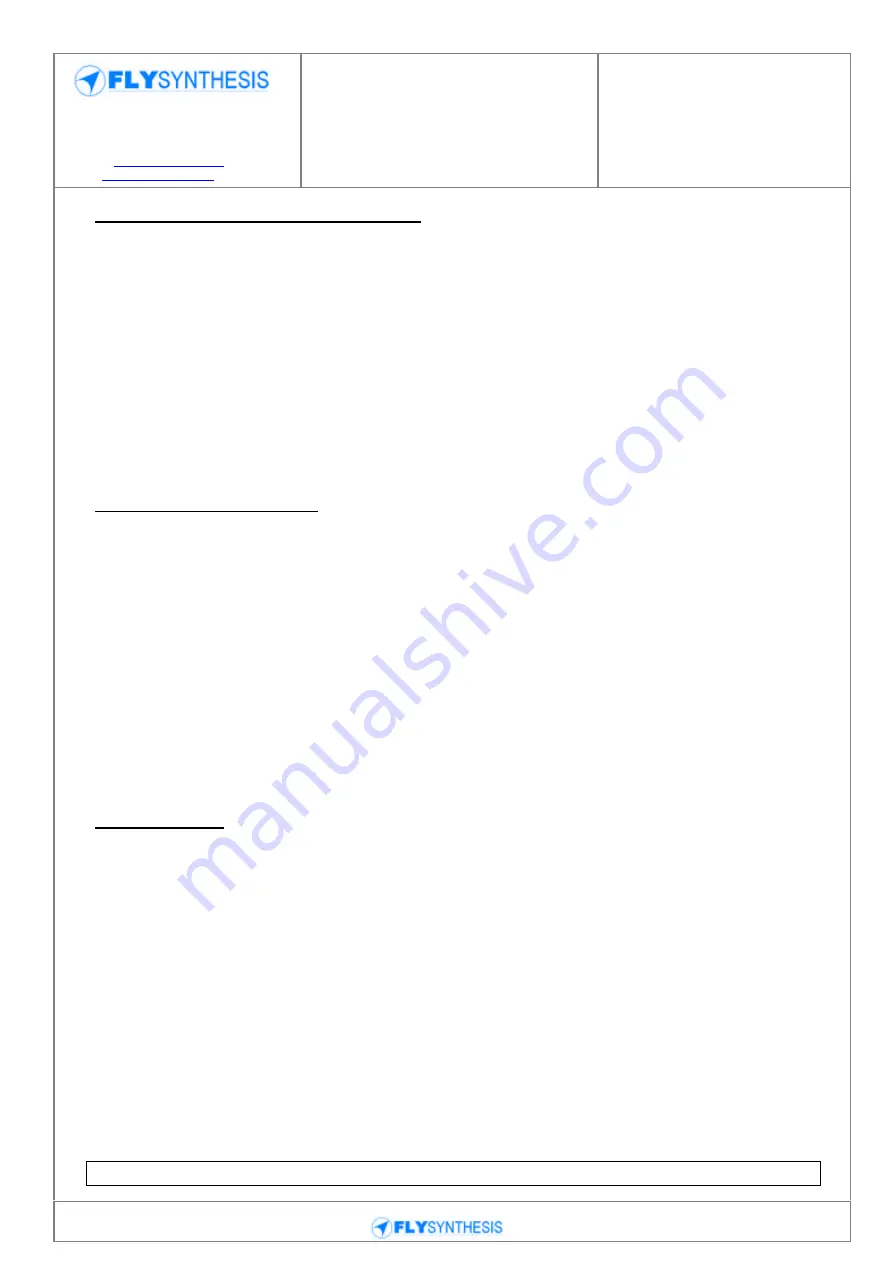
8
Provincial Road n.78 Km 12.150
33050 Mortegliano (UD) – Italy
Tel. +39.(0)432.992482 – +39.(0)432.993557
Fax +39.(0)432.931280
Sito web:
www.flysynthesis.com
e-mail:
info@flysynthesis.com
Maintenance Manual
FLY SYNTHESIS TEXAN
TOP CLASS 580 ISR
(For Rotax 912 ULS
versions)
Identification: MM_TC_580_Rev.2
Page: 8 of 77
Date: 15/02/11
Issued: C. Cosatto
Verified: C. Cosatto
Approved: C. Cosatto
Revision Description:
Placard update
1.1 GENERAL SAFETY INFORMATION
This manual contains recommended procedures and instructions for ground handling,
servicing and maintaining the
TEXAN TOP CLASS 580 ISR
. The procedures described
are
to be used in addition to the particular governing body‘s regulations for each country
where the aircraft is being flown. Where a maintenance procedure contravenes local
regulations, the procedures of the local governing body will take precedence. This manual
may refer you to the engine manual(s) for maintenance required for the relevant engine.
Maintenance instructions are divided to scheduled and unscheduled tasks. Scheduled
tasks are carried at fixed intervals, either flight hours or periods of time, e.g. at each
100hrs, or once a year which ever comes first.
Unscheduled tasks are those required when the airplane condition if affected after
damage is discovered or some unusual event like a heavy landing.
1.2 OWNER MAINTENACE
The Texan Top Class 580 ISR has been designed as a simple aircraft that can be
maintained by owners. Fly Synthesis allows normal maintenance up to 100 hourly
servicing to be carried out by the owner. This includes:
Oil and Oil filter changes
Fuel filter changes
Brake pad changes
Spark plug changes
Tire changes
Fly Synthesis recommends that any aircraft being used for flight training or for hire/reward
operation be maintained by an approved maintenance person or organisation.
1.3 AIRFRAME
The fuselage, wings and tail are constructed from composite materials. Carbon fibre is
used in highly loaded parts of all the structure, like wing spars. The fuselage is made
using a composite skin, bulkheads and stringer construction. Sandwich honeycomb is
used where required, from the firewall to the tail. The engine is installed on a steel engine
mount connected to the firewall. The engine cowling is achieved with two composite
material parts, an upper and lower cowling, fixed together with the cam-lock system. The
engine compartment is made from steel firewall. The wings are made of a composite skin
and ribs with one main spar, connecting both wings together in the centre of the fuselage.
Wing-fuselage loads are transmitted through four bolts from the root ribs of each wing to
two cross antitorsional tubes in the fuselage construction. An aerodynamic fairing, called
Karman, covers the fuselage / wing root area. The cockpit canopy is made of two parts.
The forward fixed windshield is installed on the cockpit roll bar, designed to protect the
occupants in case of turn over. The aft part of the canopy is designed to move backwards
to open the cockpit. When closed, the canopy is held in place by two locks on each side,
four locks all together.
WARNING: The four locks must be engaged and locked during flight.


